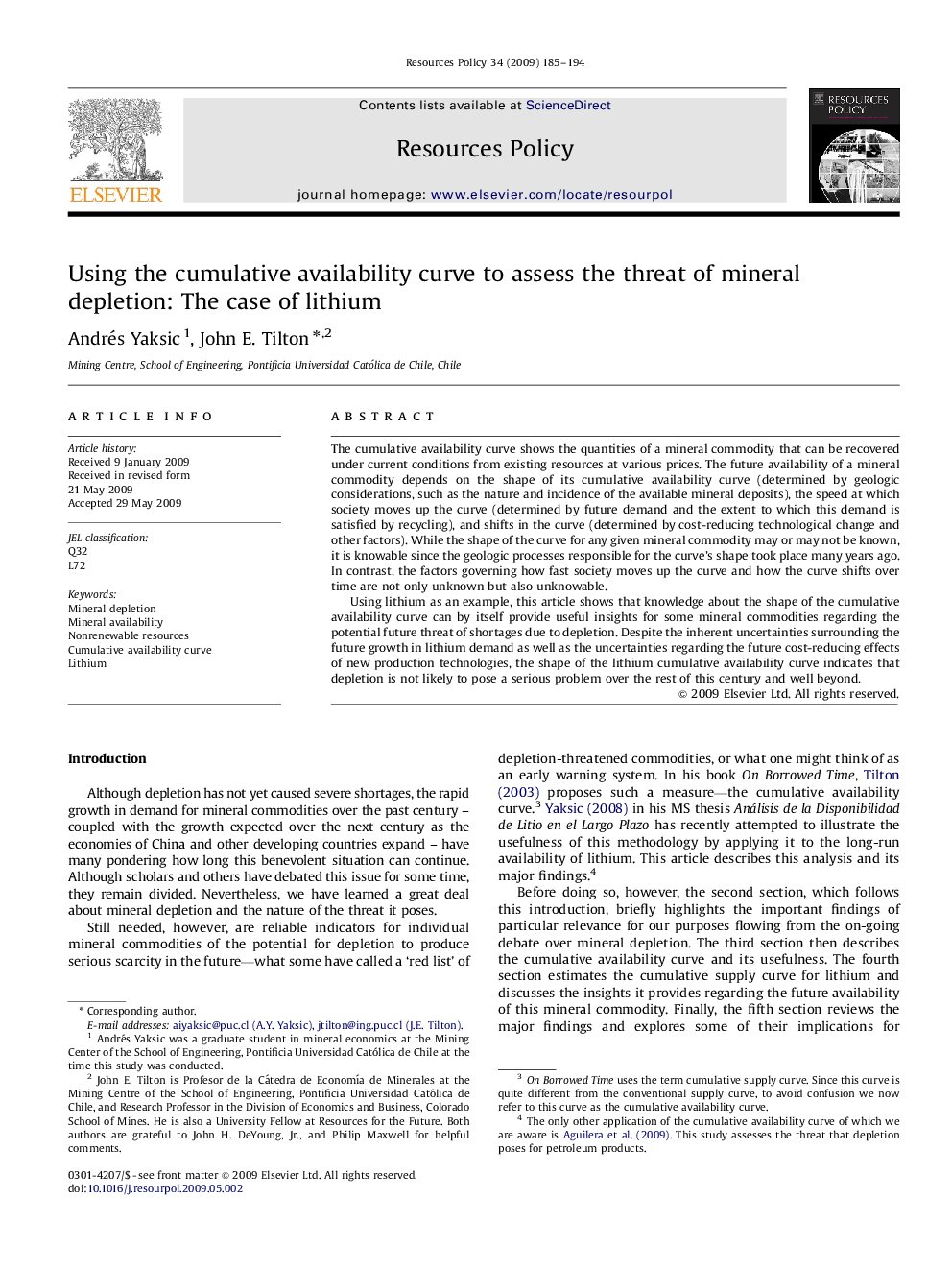| کد مقاله | کد نشریه | سال انتشار | مقاله انگلیسی | نسخه تمام متن |
|---|---|---|---|---|
| 985968 | 934734 | 2009 | 10 صفحه PDF | دانلود رایگان |

The cumulative availability curve shows the quantities of a mineral commodity that can be recovered under current conditions from existing resources at various prices. The future availability of a mineral commodity depends on the shape of its cumulative availability curve (determined by geologic considerations, such as the nature and incidence of the available mineral deposits), the speed at which society moves up the curve (determined by future demand and the extent to which this demand is satisfied by recycling), and shifts in the curve (determined by cost-reducing technological change and other factors). While the shape of the curve for any given mineral commodity may or may not be known, it is knowable since the geologic processes responsible for the curve's shape took place many years ago. In contrast, the factors governing how fast society moves up the curve and how the curve shifts over time are not only unknown but also unknowable.Using lithium as an example, this article shows that knowledge about the shape of the cumulative availability curve can by itself provide useful insights for some mineral commodities regarding the potential future threat of shortages due to depletion. Despite the inherent uncertainties surrounding the future growth in lithium demand as well as the uncertainties regarding the future cost-reducing effects of new production technologies, the shape of the lithium cumulative availability curve indicates that depletion is not likely to pose a serious problem over the rest of this century and well beyond.
Journal: Resources Policy - Volume 34, Issue 4, December 2009, Pages 185–194